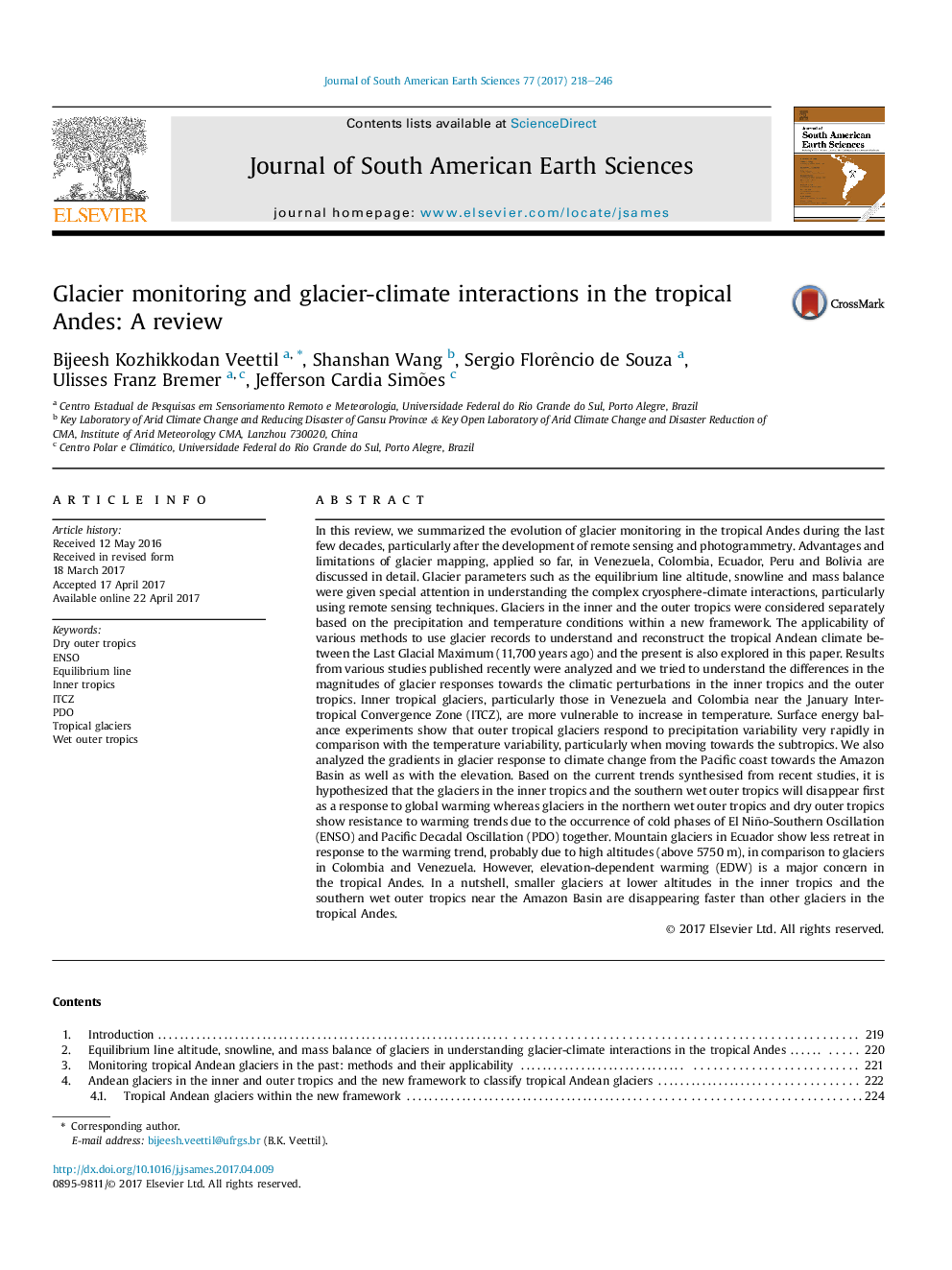| کد مقاله | کد نشریه | سال انتشار | مقاله انگلیسی | نسخه تمام متن |
|---|---|---|---|---|
| 5780374 | 1635133 | 2017 | 29 صفحه PDF | دانلود رایگان |

- Glacier-climate interactions along the tropical Andes within a new framework.
- Tropical Andean glaciers as climate records in the past.
- Gradients in glacier response to climate variations from the north to south, west to east, and with elevation.
- Glacier response to annual and decadal variations in climate such as ENSO and PDO.
In this review, we summarized the evolution of glacier monitoring in the tropical Andes during the last few decades, particularly after the development of remote sensing and photogrammetry. Advantages and limitations of glacier mapping, applied so far, in Venezuela, Colombia, Ecuador, Peru and Bolivia are discussed in detail. Glacier parameters such as the equilibrium line altitude, snowline and mass balance were given special attention in understanding the complex cryosphere-climate interactions, particularly using remote sensing techniques. Glaciers in the inner and the outer tropics were considered separately based on the precipitation and temperature conditions within a new framework. The applicability of various methods to use glacier records to understand and reconstruct the tropical Andean climate between the Last Glacial Maximum (11,700 years ago) and the present is also explored in this paper. Results from various studies published recently were analyzed and we tried to understand the differences in the magnitudes of glacier responses towards the climatic perturbations in the inner tropics and the outer tropics. Inner tropical glaciers, particularly those in Venezuela and Colombia near the January Intertropical Convergence Zone (ITCZ), are more vulnerable to increase in temperature. Surface energy balance experiments show that outer tropical glaciers respond to precipitation variability very rapidly in comparison with the temperature variability, particularly when moving towards the subtropics. We also analyzed the gradients in glacier response to climate change from the Pacific coast towards the Amazon Basin as well as with the elevation. Based on the current trends synthesised from recent studies, it is hypothesized that the glaciers in the inner tropics and the southern wet outer tropics will disappear first as a response to global warming whereas glaciers in the northern wet outer tropics and dry outer tropics show resistance to warming trends due to the occurrence of cold phases of El Niño-Southern Oscillation (ENSO) and Pacific Decadal Oscillation (PDO) together. Mountain glaciers in Ecuador show less retreat in response to the warming trend, probably due to high altitudes (above 5750 m), in comparison to glaciers in Colombia and Venezuela. However, elevation-dependent warming (EDW) is a major concern in the tropical Andes. In a nutshell, smaller glaciers at lower altitudes in the inner tropics and the southern wet outer tropics near the Amazon Basin are disappearing faster than other glaciers in the tropical Andes.
Journal: Journal of South American Earth Sciences - Volume 77, August 2017, Pages 218-246